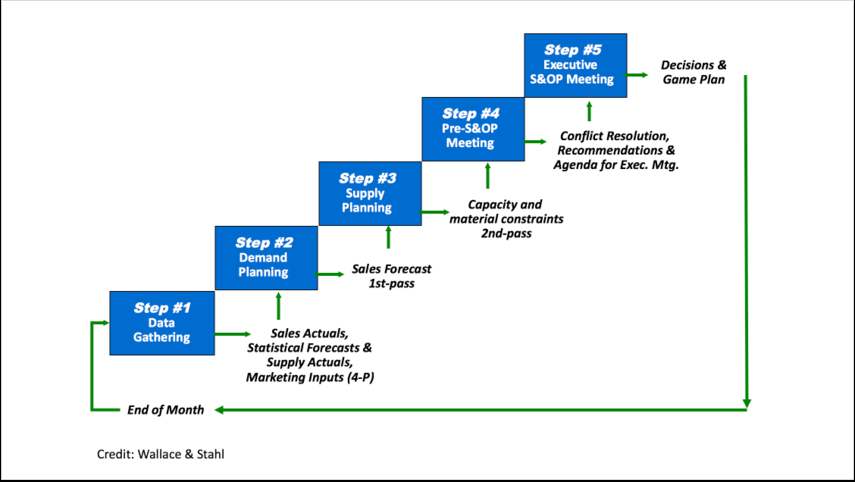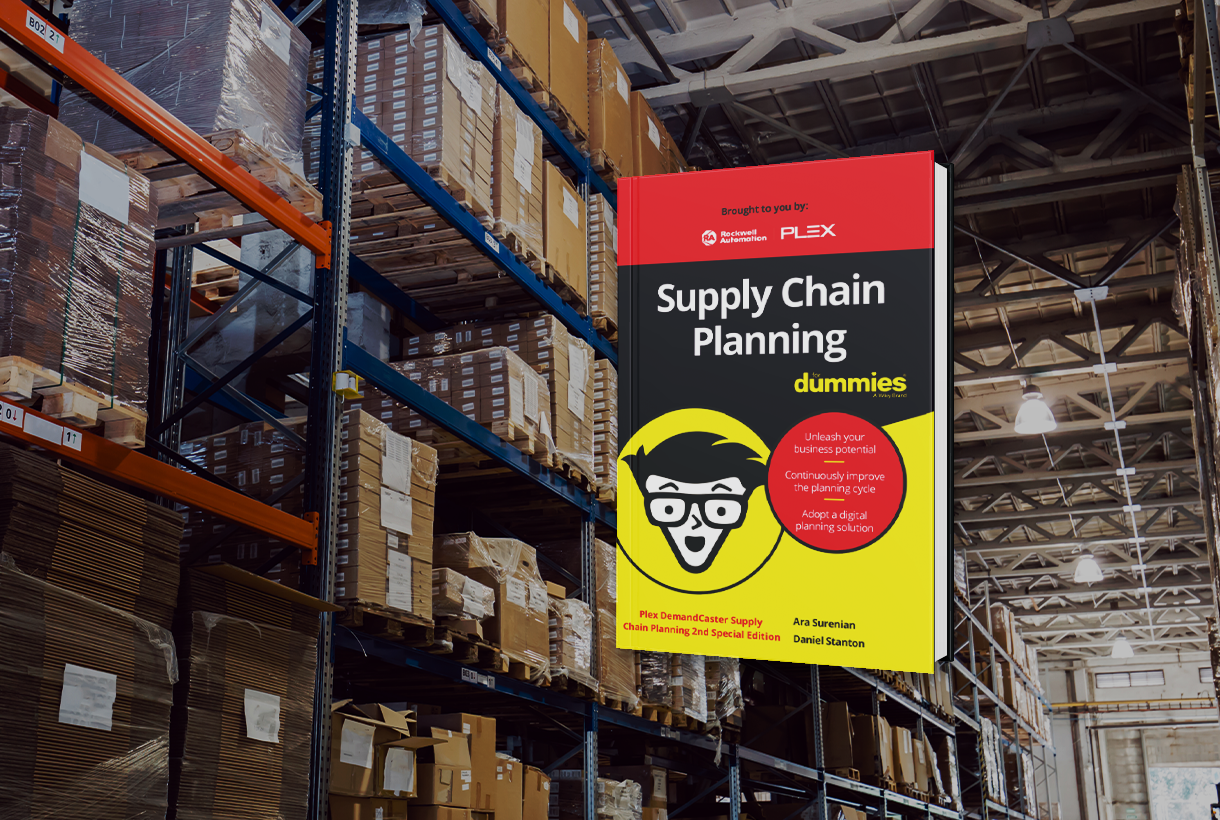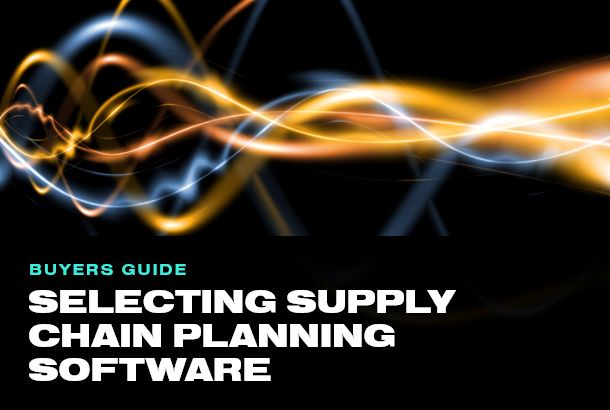What Is Sales and Operations Planning (S&OP)?
Sales and operations planning is an aspect of supply chain planning whose goal is the creation of a unified, consensus-based business plan. It draws input from an organization’s key functional areas, including sales, marketing, manufacturing, distribution, and finance. Cross-functional collaboration results in plans that all stakeholders understand and are committed to supporting.
On the spectrum of supply chain planning activities, S&OP is typically a more advanced discipline. Many smaller organizations or startups may require only inventory planning. They may add capabilities such as demand planning and supply planning as they grow. Organizations typically seek out S&OP functionality once they begin to sell larger numbers of differentiated products.
Why Sales and Operations Planning?
Some planning activities, such as statistical forecasting, can produce excellent results. And yet those results tend to be fairly narrow in scope. For example, a good statistical forecast will rely on algorithms and an item’s history to produce estimates. But other data, such as revenue and profit projections, as well as marketing events are often not a formal part of statistical forecasting. As a consequence, collaboration is lacking with key constituents of the business.
In contrast, the aim of sales and operations planning is to gain a holistic view of planning by extending the forecasting process to sales, marketing, finance, and operation for their collective input and adjustments. More advanced S&OP practices also incorporate point of sale (POS) and other market-related information. Organizations seeking to acquire S&OP capabilities can find them in leading supply chain planning software solutions.
Collaboration Delivers Big Benefits
The real value and performance gains of S&OP come from collaboration. All parties are able to align because they use the same sets of data. With its built-in checks and balances, S&OP brings an end to excuses and drives accountability. The results of such collaboration are often impressive. Studies show that compared to their peers, high-performing S&OP-driven companies on average experience:
- 15% less inventory
- 17% stronger perfect order fulfillment
- 35% shorter cash-to-cash cycle times
- 1/10th tenth of the stock-outs
How It Works
Sales and operations planning is typically led by senior management and is most often executed monthly.
It is an iterative process in which results from one planning cycle are compared with the next to provide management with trend information from across the business. Participants evaluate time-phased projections for supply and demand to ensure that the tactical plans in all business functions and geographies align and support the company’s strategy.
With traditional “silo-based” companies, sales, manufacturing, and financial functions often compete against each other. Without a consolidated plan, small problems can quickly grow into much larger issues. These can be quickly identified and proactively addressed through S&OP reports and other measures.
S&OP Benefits
Some of the benefits of effective sales and operations planning process include:
- Increased customer service levels
- Improved profitability
- Higher product revenues
- Lower inventories and obsolescence
- Reduced lead times
- Quicker responsiveness
- Top-down management control
- Predictable operating performance for shareholders
In addition, an S&OP process should also help to answer the following basic questions:
- How does projected demand compare to projected supply?
- What are the projected resource requirements to meet both service and cost targets?
- What actions are required to ensure the appropriate levels of resources are available when needed?
Translating Benefits to Real Business Value
| Typical Improvement | Business Impact |
|---|---|
| Reduce inventory | Reduce inventory carrying costs and improved cash flow |
| Reduce time to market for new products | Increase revenue by staying ahead of the competition |
| Increase capacity and throughput | Reduce operating costs and increased productivity |
| Higher product quality | Reduce cost of goods sold |
| Reduce lead times | Reduce expediting costs and inventory while increasing sales |
| Better customer service | Increase sales and customer satisfaction |
Aggregate Level Planning
One of the primary benefits of S&OP is the planning structure. Most forecasting processes generate forecasts only using an item’s history. In contrast, S&OP typically places that data in context, such as within a given market or customer. It does so by providing data at an aggregate level across entire groups of customers or product families. With this big picture view, planners can gain important insights by easily spotting similarities in sales order history and marketing characteristics across aggregated groups.
Key Questions Related to the Demand Plan
An S&OP plan is only as solid as the components that go into it. One of the most important is the demand plan, which contains projected sales forecasts and other demand-related data.
In order for the demand plan to capture the information that all consumers of the S&OP will need, those responsible for creating the demand plan would do well to address several key questions.
These questions help participants define what exactly is being forecast and how the demand plan should be structured. Ideally, the answers will form part of the forecast agreement with supply planners, who are the major customers of the demand plan.
- Which units will the demand plan reflect? The demand plan is typically executed in units. But specifically which ones? Cases, weight, length? Because data will be used in aggregate, you will want to define a standard unit of measure that converts the selling units to the standard found in the demand plan (assuming you have multiple selling units). When selecting S&OP software, look for solutions that can do this conversion for you automatically.
- Should the demand plan be converted into currency? E.g. dollars, rupees, euros, pound sterling? If so, what is your organization’s process for stating it in a revenue forecast? Who will use that revenue forecast? Some S&OP software solutions enable you to automatically build the revenue forecast using an average selling price or customer selling price based on a single currency basis.
- What will you use to measure and forecast demand-shipments or orders? This is a very important question and can generate vastly different results. Some S&OP solutions use shipments as the default measure. The best ones enable you to change the default to orders, as needed. A critical follow-up question to ask is whether your demand plan should also include returns and credits.
- At what level(s) of the product hierarchy should you run forecasts, and how should they be disaggregated to the item level?
General S&OP Steps
While the sales and operations planning process can differ greatly among organizations, there tend to be certain major steps that virtually all planners follow. The ones below were developed by Thomas Wallace and Robert Stahl, co-authors of the definitive guide, Sales & Operations Planning.
- Data Gathering/Management: Collect information on past sales, analyze trends, and report forecasts. Run Pareto analysis to assign forecast parameters (i.e., item vs. group). Manage new items and discontinue old items.
- Demand Planning: Validate forecasts, understand sources of demand, account for variability, and revise customer service policies; layer on promotion plans, one time events, and new product and customer launches.
- Supply Planning: Assess the ability to meet demand by reviewing available capacity, inventory, and scheduling required operations. Set inventory targets and plan supply by level loading and/or demand chase.
- Plan Reconciliation (Pre S&OP): Match supply and demand plans with financial considerations.
- Finalize and Release the S&OP: Finalize the plan and release it to implementation.

The Value of Integrated S&OP
The end goal of S&OP is to create a plan that unifies all demand and supply planning activities around a consensus-based plan. As mentioned previously, cross-team collaboration is key to building consensus. Reaching consensus is much easier when S&OP activities are tightly integrated with other aspects of supply chain planning, such as inventory planning, demand planning, and supply planning. Supply chain planning software that provides such integration can substantially ease your path to creating S&OP plans that improve customer service, reduce costs, and drive higher profitability.



